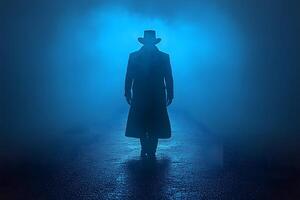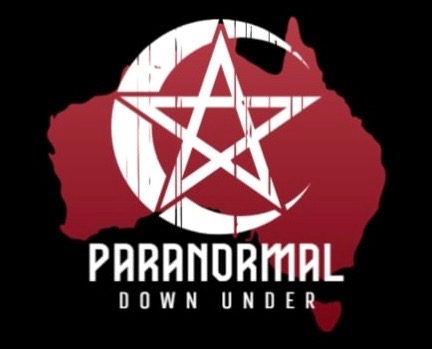
Demonic Possession: The Stages, Signs and How to Protect Yourself
For centuries, tales of demon possession have haunted humanity’s imagination. From biblical accounts of exorcisms to chilling modern cases, possession remains one of the most feared and controvesial subjects in the paranormal field.
While skeptics view it as a product of psychology or superstition, believers consider it undeniable proof of dark spiritual forces. Regardless of belief, understanding the stages and how to protect yourself from these molevolent entities is vital for anyone interested in the paranormal world.
What is Demonic Possession?
Demonic possession occurs when an evil, often non-human, spirit gains control over a person’s mind, body or soul. It’s often described as a process rather than a single event, beginning subtly and escalating until the victims free will is overridden.
Those who claim to experience possession often report drastic personality changes, blackouts, violent outbursts or speaking in unknown languages. Many religious texts and case studies also describe physical manifestations such as strength beyond normal limits, aversion to sacred objects or knowledge of hidden truths.
Although explanations differ, from spiritual warfare ro mental illness, the symptoms remain eerily consistent across cultures and time.
Historical Background

Reports of possession stretch back thousands of years. Ancient Sumerians wrote of evil spirits that entered the body, while Egyptian texts describe priests driving out “malevolent forces”. In the christian tradition, Jesus performed exorcisms as acts of divine authority. Similarly, Hinduism and Buddhism include rituals for casting out negative entities known as bhuts or pretas.
Even today, exorcisms are performed by priests, shamans and healers worldwide, and the Vatican continues to train specialized exorcists. Despite advances in medicine and psychology, the fear of demonic possession remains embedded in modern culture, from documentaries to horror films inspired by real events.
The Four Stages of Demonic Possession
Although every case is unique, most documented possessions follow a recognizable pattern. Below are the fuor stages commonly recognized by exorcists and paranormal researchers.
1. Infestation
This is the inital phase, often mistaken for a haunting. The entity attaches itself to a location, object or person.
- Common signs include knocks, whispers, cold spots and electrical disturbances.
- The activity gradually becomes more personal and threatening.
- Victims often feel watched or drained of energy.
The purpose of infestation is simple: to instill fear and open the door for deeper influence.
2. Oppression
Once the spirit establishes a connection, it begins to attack the victim mentally, emotionally and spiritually.
- Sleep paralysis, vivid nightmares or sudden depression may occur.
- The individuals life may spiral into chaos, financial problems, illness or constant bad luck.
- The victim may feel hopeless, angry or isolated.
This phase is where the entity tries to break down a persons faith, confidence and self-control, paving the way for full possession.
3. Obsession
At this point, the entitys presence domincates the victims mind.
- The person hears voices, experiences intrusive thoughts or becomes fixated on dark or violent ideas.
- They may withdraw from loved ones and lose interest in normal life.
- Fear and confusion become constant companions.
During this stage, the demons influence is psychological and emotional. The victim feels trapped inside their own thoughts, often believing there’s no escape.
4. Possession
The final and most dangerous phase occurs when the entity takes control of the body.
- The person may enter trance-like states or blackouts.
- Their voice, mannerism or language may change drastically.
- Religious objects provoke violent or aggressive reactions.
- Witnesses may describe unnatural strength and sudden knowledge.
This stage is considered a total loss of autonomy. Intervention by clergy, spiritual healrs or experienced exorcists is often sought to reclaim the persons body and soul.
Protecting Yourself from Demonic Possession
While true demonic possession is said to be rare, those who investigate and interact with the paranormal should always take precautions. Protection techniques vary across faiths and traditions, but the goal is univeersal: maintaining strong spiritual, emotional and energetic defenses.
1. Maintain Strong Spiritual Boundaries
Regular prayer, meditation or spiritual grounding helps with strengthening your aura and can help to repel negative entities. Whether you’re religious or not, focusing your intent on light, peace and protection creates a powerful energetic shield of sorts.
2. Avoid Provocation
Inviting or challenging dark entities during investigations can open dangerous doorways. Never use a Ouija Board, not even if you believe you know what you’re doing with it. Avoid ritual-based tools unless you fully understand how to close the session safely.
3. Use Protective Symbols and Objects
Crosses, pentagrams, crystals or blessed items are believed to repel malevolent forces. Sage, frankincense or holy water can also be used to cleanse spaces after investigation.
4. Ground and Cleanse Regularly
after investigating or entering spiritually active areas, ground yourself by visualizing negative energy flowing out and being replaced by light. Cleansing baths with sea salt or protective herbs can help restore balance.
5. Keep a Clear and Healthy Mind
Entities are said to target individuals who are emotional unstable, exhausted or deeply fearful. Regular rest, a positive mindset and emotional stability make you far less vulnerable to spiritual attacks.
6. Call for Spiritual or Professional Help
If symptoms of opression or possession appear, seek assistance from a trusted priest, spiritual healer or paranormal team. In some cases, professional therapy can help rule out psychological causes and provide much-needed support.
Are All Possessions Truly Demonic
Not every possesion-like experience involves a demon. Many paranormal investigators note that earthbound spirits, those who died suddenly or violently, may attach themselves to the living out of confusion rather than malice. Similarly, trauma, stress and sleep disorders can produce experiences that mimic supernatural phenomena.
A balanced approach is essential: always debunk before you conclude. Understanding the line between psychology and spirituality helps protect both the mind and spirit.
Final Thoughts
Demonic possession represents the darkest side of the paranormal, a chilling reminder of what happens when unseen forces cross into the human realm. Whether viewed as a battle between good and evil or a psychological manifestation of fear, the phenomena continues to captivate, terrify and inspire investigation.
For those who explore the unknown, respect and protection are the keys to staying safe. Never underestimate the power of intent, and always remember: not every shadow deserves your attention.

What is a Paranormal Investigator? A Look at the Field of Paranormal Research
In recent years, interest in the paranormal has grown significantly. From television programs to private research teams, the pursuit of understanding the unknown has evolved into a structured and professional field of study. At the centre of this work is the paranormal investigator. An individual dedicated to researching, documenting and analysing unexplained phenomena with a balanced approach that blends science, history and open-minded inquiry.
Defining a Paranormal Investigator
A paranormal investigator is a trained researcher who examines reports of unexplained occurences, often associated with hauntings, apparitions or other phenomena that fall outside the normal scientific explanation. Their objective is not merely to prove the existence of the supernatural, but to seek the truth through methodical investigation and evidence-based analysis.
Professional investigators approach each case with discipline and objectivity, gathering data through both technological and observatrional methods. Their findings contribute to a broader understanding of the potential relationship between environmental, psychological and spiritual factors in reported paranormal activity.
Core Responsibility of a Paranormal Investigator
Paranormal investigations involve careful preparation, systematic data collection and comprehensive evidence review. Each stage of the process plays a vital role in maintaining professionalism and credibility.
1. Preliminary Research
Before conducting any fieldwork, investigators perform detailed background reseach on the location or case. This includes reviewing historical records, interviewing witnesses and assessing environmental conditions. Understanding the history and context of a site is crucial in distinguishing legitimate anomalies from naturally occuring explanations.
2. Equipment Setup and Calibration
Modern investigators employ a range of instruments to collect measurable data such as:
- EMF Meters: Detect fluctuations in electromagnetic fields.
- EVP Recorders: Capture potential audio phenomena not heard during investigation.
- Spirit Boxes: Facilitate real-time audio scanning for possible responses.
- Thermal and Infrared Cameras: Detect variations in temperature and visual anomalies in low light conditions.
All Equipment is tested, calibrated and documented before and after each investigation to ensure accuracy and eliminate false readings.
3. Field Investigation and Data Collection
During an investigation, teams work methodically, recording environmental changes, conducting EVP sessions and mainting detailed logs. Communication is kept professional and respectful, particularly in historic or private locations. The emphasis remains on evidence collection and environmental monitoring, not on provocation or entertainment.
4. Evidence review and Analysis
Following the investigation, all collected data, including video, audio and environmental readings, is thoroughly reviewed. Investigators look for inconsistencies, patterns or unexplainable results. A significant portion of professional paranormal work occurs during this analysis stage, often taking days or weeks to complete.
5. Debunking and Verification
A critical aspect of responsible investigation is debunking, identifying logical or environmental explanations for percieved paranormal activity. Professional teams approach all evidence with a healthy degree of skepticism, ensuring that any remaining anomalies are genuinely unexplained and not the result of natural interference.
Why People Choose to Investigate the Paranormal
The motivation behind paranormal investigation are varied, but they often stem from a combination of curiosity, compassion and a desire for understanding.
Scientific and Intellectual Curiosity
Many investigators are motivated by the pursuit of knowledge. They aim to better understand phenomena that challenge conventional science, approaching the unknown with disciplined methodology.
Assisting Others
Paranormal investigators are frequently called upon to help property owners, families or businesses experiencing unexplained disturbances. By identifying the cause, be it environment, psychological or potentially paranormal, they provide reassurance and clarity to those affected.
Historical and Cultural Preservation
Investigations often take place in historic locations. Through research and documentation, investigators help preserve stories, traditions and events that might otherwise be forgotten, contributing to broader cultural and historical awareness.
Personal and Spiritual Exploration
For some, the word is deeply personal. Individuals who have had their own unexplained experiences often seek to understand them through structured, professional investigation.
The Evolving Role of the Paranormal Investigator
Modern paranormal investigators strive to balance open-mindedness with scientific integrity. While the field remains largely outside mainstream academia, advances in technology and data analysis have brought increased professionalism and structure. Many teams now follow standardised protocols, maintain ethical guidelines and collaborate with other disciplines such as psychology, environmental science and history.
This blend of science, empathy and respect for both the living and the deceased defines the modern approach to paranormal research.
Conclusion
A paranormal investigator is not merely a ghost hunter, they are a researcher, historian and analyst dedicated to uncovering the truth behind unexplained events. Through disciplined methodology, ethical practice and evidence based inquiry, they bring structure and credibility to a field that has fascinated humanity for centuries.
Whether exploring historic sites or helping those affected by mysterious occurences, the goal remains constant. To better understand the unknown while maintaining respect for the stories, people and places connected to it.
